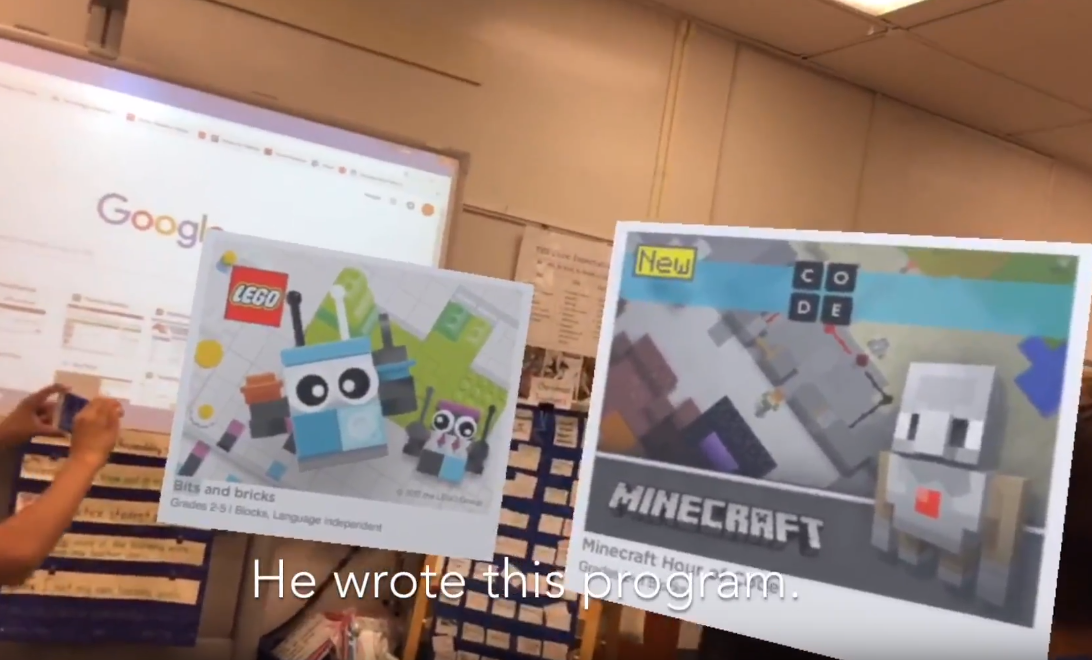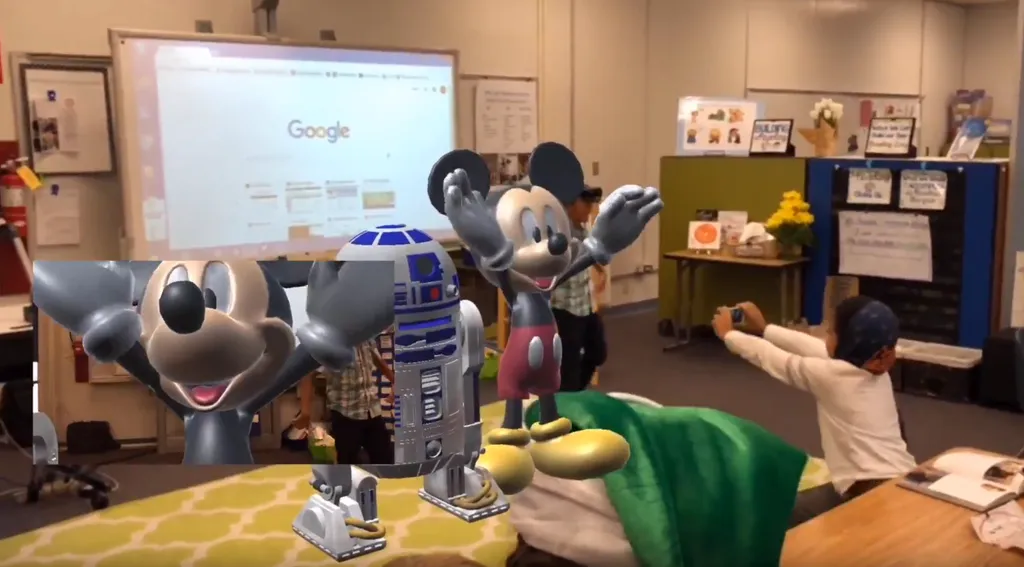Steve Lukas and his son Christian were able to explain VR and AR to a third grade class without needing other kids to put on a headset.
Earlier this year I decided against bringing VR to a recent career day at my child’s school because I would’ve insisted upon permission slips being signed by guardians before letting other kids try a headset. Lukas had a similar thought.
“Ever since my son has been exposed to VR, I’ve always wanted him to do a show and tell for his class, but both the age restrictions and setup of immersive VR have prevented us from pursuing it further,” Lukas wrote in an email.
He figured out a way though for his son to do a class presentation wearing Microsoft’s HoloLens while letting other kids understand what AR is by just holding up iPhones to see objects in the shared space. As an added bonus to an awesome presentation (Great job by the way, Christian), the demonstration also serves as a cool example of some tech we haven’t really seen before from the major companies involved in VR and AR.
Lukas’ startup Across Realities developed a technology that spans different platforms like ARKit for Apple’s iPhones and iPads as well as Microsoft’s HoloLens, and it anchors objects to the same space in the real world. The kids can interact in new ways because they all perceive the virtual object to be in the same spot in the real world.
“The presenter has the advantages of hands-free viewing with gesture and voice control to drive the pacing and placement of content. The mobile AR devices meanwhile can both view and / or interact with the scene using touchscreen input,” Lukas explained. “The video shown here was filmed natively through an iPhone running ARKit…since each student can see the digital content from their own vantage point, to them it’s as if the presenter is actually creating and manipulating these elements in the real world.”
A real-time active multiplayer AR experience is not easy to pull off but as the sound levels in the video suggests when the kids see R2-D2 and Mickey Mouse pop in, the software did a good job of convincing the kids those characters were in the room. Christian was also aided in the presentation by AR too.

“We installed a guided teleprompter in the Hololens and added text overlays to his hands so he always knew exactly how each air tap would advance the scenes,” Steve Lukas wrote. “That gave him the confidence to deliver the presentation even with last-minute changes to the script, and now he’s even excited to do it again in front of the entire school.”
AcrossXR is looking into opportunities in the educational space to further develop this technology into a product.
“Seeing the students get really excited about STEM was very inspirational for both us and for the educators we’ve been sharing this with,” Lukas wrote. “So we’re meeting with consultants in the space to see how we can factor into group learning programs with various school districts. As assets and content authoring are critical, we’re actively identifying API partners that we can collaborate with us as we build this out as an enterprise tool for educators & training programs.”


























